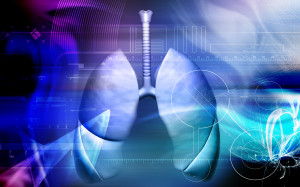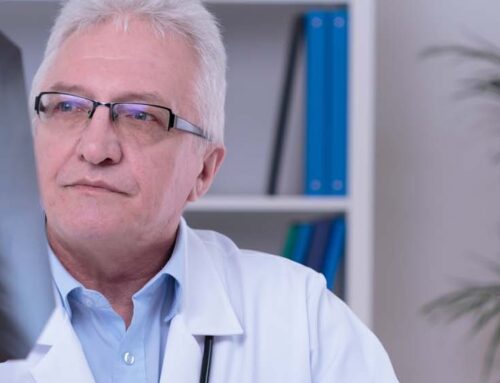Just as we promised at the end of our most recent Florida Lung, Asthma and Sleep Specialists blog, we have dedicated this blog to more information about EVLP, or Ex-vivo Lung Perfusion. You  will find it helpful to read or review our previous blog before you continue to read this one.
will find it helpful to read or review our previous blog before you continue to read this one.
Technically this blog is Part 2 of our EVLP technology coverage. Knowing the previous information will help you better understand this blog article.
Once again we must explain that we hope neither you nor a member of your family ever has to endure a lung transplant. Still, we want you to be aware of the huge technological strides that have been made for critical patients who must be given a new pair of lungs.
As we explained in Part I, Ex-Vivo treatment now means many more lungs are salvageable for use in transplant situations. “Ex vivo lung perfusion (EVLP) is an innovative therapy applied to donor lungs outside of the body before transplantation that improves organ quality and makes lungs that were previously unsuitable safe for transplant.”
It is ironic that many lungs used recently might have been rejected by the surgeons a just few months ago.
However, the ex-vivo (EVLP) treatment has made it possible to use donated lungs that would have been considered below par years or even months ago. (Again, we ask you refer to the previous blog for the numbered list of how the EVLP process helps lungs prior to transplantation.)
Experts at Penn Medicine have given us a short and simple definition for EVLP, “The process involves a three-to-four-hour period during which the donated lungs are placed inside a sterile plastic dome attached to a ventilator, pump, and filters. The lungs are maintained at normal body temperature and treated with a bloodless solution that contains nutrients, proteins, and oxygen. This can reverse lung injury and remove excess lung water.”
When they are treated with this new technology, the lungs appear to become healthier and more acceptable to the new owner. It is almost as if the EVLP process heals them.
“UT Southwestern is one of 16 medical centers across the country — and the only one in Texas — participating in a national clinical trial of the technology, which, if effective, could significantly expand the number of donor lungs available for transplantation.”
Lungs, EVLP and A Quick Look at the Statistics
Let’s take a quick look at the number of lung transplants in the United States. In 2015, there were 2,075 lung transplants performed in the U.S. Hopeful News. However, you should be aware that 200 people died while awaiting a lung transplant.
200 people died while awaiting a lung transplant.
This is why technology such as the EVLP is critically important. It can increase the number of available lungs for transplantation.
Southwestern, University of Texas is one of the leading medical centers in the country for lung transplants. They have performed over 60 lung transplants each year for the last three years. Overall they have accomplished more than 500 lung transplants. They rank as number 8 in all the U.S. medical centers do the surgery.
New Lungs and John Herzig of Texas–A Small Case Study:
Let’s view the case of John Herzig who became the first patient in Texas to receive transplanted lungs using EVLP.
He was forced to retire at 58 years old. He suffered with pulmonary fibrosis and severe breathing problems.
Mr. Herzig wanted to be able to play with his grandson.
He said, “Before the transplant, I could ride on the tractor with my grandson, but I couldn’t do anything else with him. I was just too weak.”He waited patiently while the team of surgeons removed the donor’s lungs. There was a time during which the lungs did not belong to either the donor or to John Herzig. As mentioned above, EVLP requires 3-4 hours of close monitoring.
1. During that time, the doctors examined the inside of the lungs with a bronchoscope.
2. Then, the EVLP team ran a special fluid into the lungs, taking them nutrients and removing waste products. This is done in the natural way. Although the lungs are outside of the body, they must use their own blood vessels to soak up the nutrients.
3. Likewise, Dr. Amit Banga, Assistant Professor of Internal Medicine, stated , “There are Three Vital Transplant Measures for a pair of lungs.”
a. The transfer of oxygen –We want this to be effective.
b. The pressure in the blood vessels–We do not want this to climb too high.
c. And “compliance,” which is a measure of the ability of the lung tissue to stretch and expand. We want the lungs to look a little like nice, elastic balloons, full and rounded.
The EVLP Team watches critically. The EVLP technology allows doctors to careful assess the lungs. Just as important, it improves the condition of the lungs and allows the extra fluid to drain.
For Mr. Herzig, “EVLP meant he could play catch with his grand child.
His doctor said, “EVLP” means we can save people like Mr. Herzig, which is very rewarding.”
Dr. Matthias Peltz, Surgical Director of Cardiac Transplantation and Mechanical Circulatory Support and leader of Mr. Herzig’s surgical team, stated
“There are more lungs declined in the operating room than any other organ.”
He added, “Ex-vivo perfusion technology allows us to evaluate organs for transplantation that we either would not previously have considered for transplantation.”
Mr. Herzig added one more touching comment. He said, “I’m so grateful to the family who agreed to donate these lungs,” said Mr. Herzig, “and thankful for the new technology that helped make them available. So now I’ll have that opportunity to play with my grandson and watch him grow.”
A  Special Message:
Special Message:
The Doctors and Staff of FLASS, hope you have an inspiring, healthy, and safe July 4th week-end. In honor of Independence Day, we leave you with a quotation from Moshe Dyan:
“Freedom is the oxygen of the soul!”





